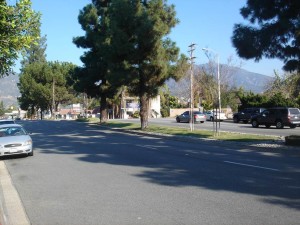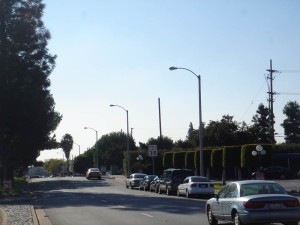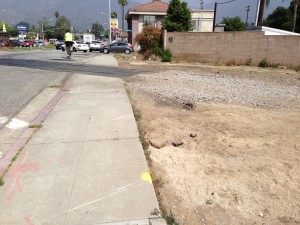Santa Anita Avenue Grade Separation
Phase 1 of the Metro Gold Line Light Rail line opened on July 26, 2003, connecting Union Station in downtown Los Angeles with the Sierra Madre Villa Station in east Pasadena. Phase 2 is the proposed extension of the light rail line from east Pasadena to Montclair. The Light Rail alignment follows the old AT&SF railroad line through the San Gabriel Valley, last used in Arcadia in 1994. For Phase 2, the line proposes to cross 26 streets at-grade. Of the 26, the crossing of Santa Anita Avenue in Arcadia has the highest average daily traffic volumes (over 32,000 ADT). During the EIR process, all Phase 2 crossings were analyzed for the need for grade separations based on the latest Los Angeles County Metropolitan Transportation Authority (Metro) criteria and none met the warrants. The City of Arcadia undertook its own technical studies of the delays and impacts to traffic at the Santa Anita Avenue at-grade crossing and determined that the interruption of traffic on Santa Anita Avenue would have a significant impact on traffic flow on the street and at the adjacent intersections. Because The Gold Line Authority would not accept the City’s request to consider funding the grade separation, the City decided to look to its citizens to solve the problem locally. The City offered a commitment of $5.0 million of its County Transportation Local Return funds as a match to a general obligation bond in the amount of $8.0 million paid by assessments on Arcadia Properties, for a total grade separation cost of $13.0 Million. The bond measure was placed on the April 2006 ballot, with the need for a two-thirds approval requirement and it passed by a margin of 72%. Phase 2 of the Gold Line Light Rail Extension was divided into two segments to better accommodate funding availability and as a result of Los Angeles County Measure R, a half-cent sales tax initiative for Transportation approved by the voters in 2008, Segment 2A from east Pasadena to Azusa was funded. The City hired its own independent Bridge designer, IBI Consulting Group, to conceptually design the bridge. The City Council reviewed several alternatives and ultimately selected a classic Art Deco bridge design to match architecture of some historic buildings and another bridge in the City. The Conceptual design was given to the Metro Gold Line Authority to incorporate into the Design/Build Contract. This grade separation project directly improves the safety and access of the Santa Anita Avenue thoroughfare and to businesses along the street. The trains are projected to have ten minute headways so potentially trains would cross Santa Anita Avenue every five minutes (for both directions). With the grade separation bridge, there will be no conflicts between vehicles and trains thus eliminating the safety issue of at-grade crossings. The safety has also been improved by the removal of the rise in Santa Anita Avenue for the at-grade crossing. The rise impacted traffic flow and limited sight




Add Comment